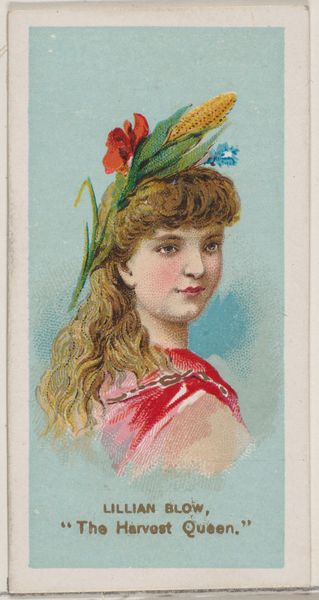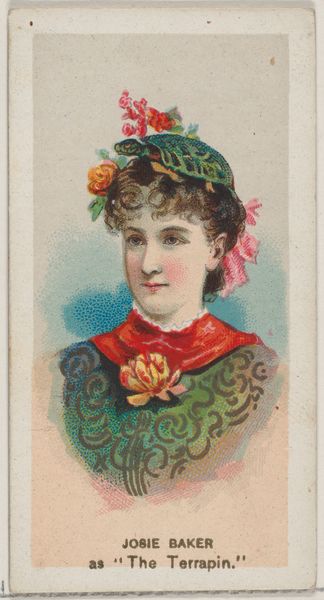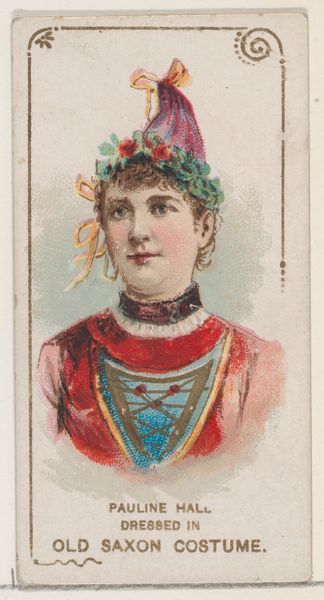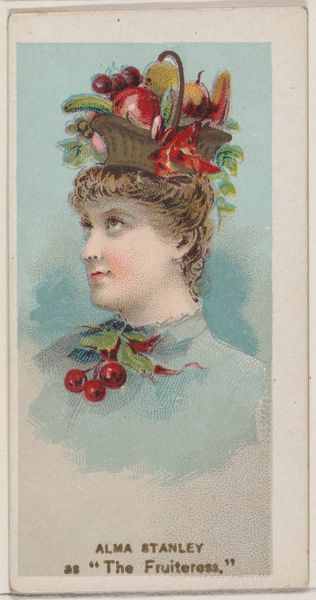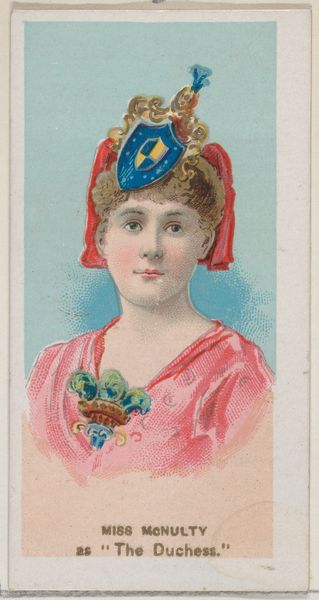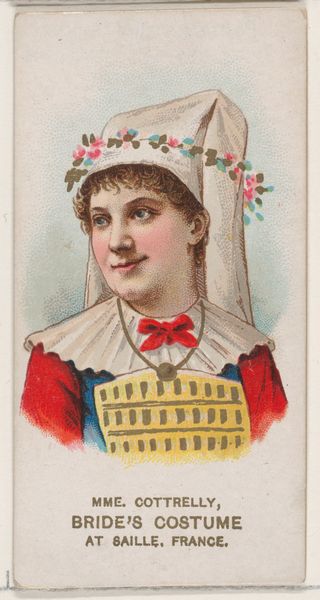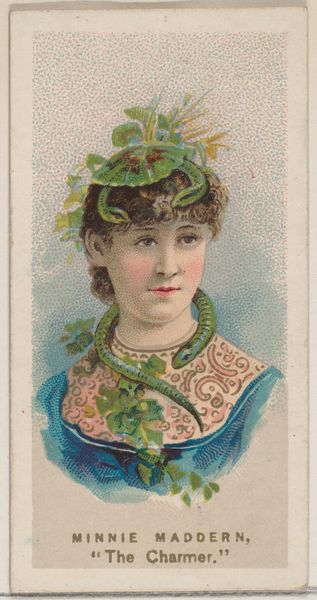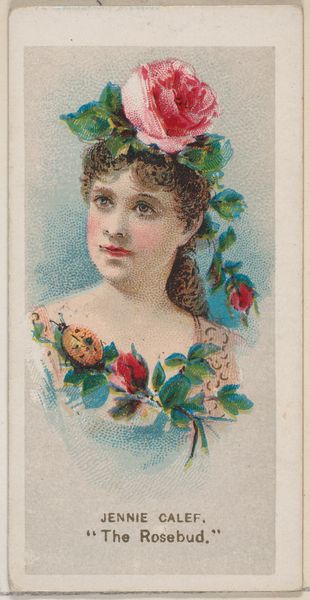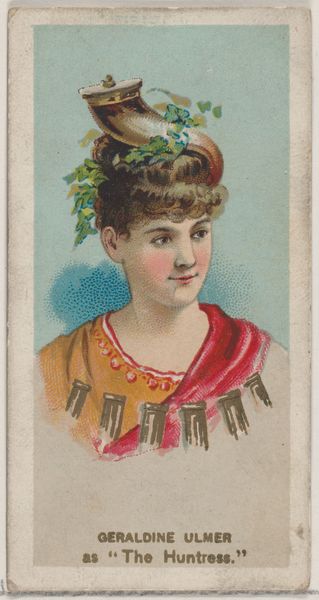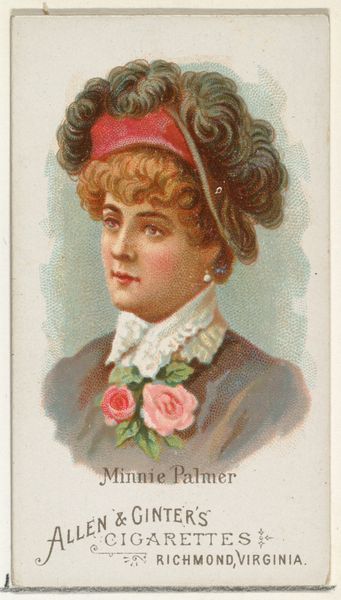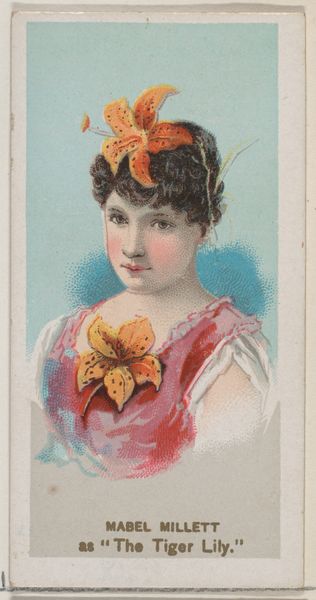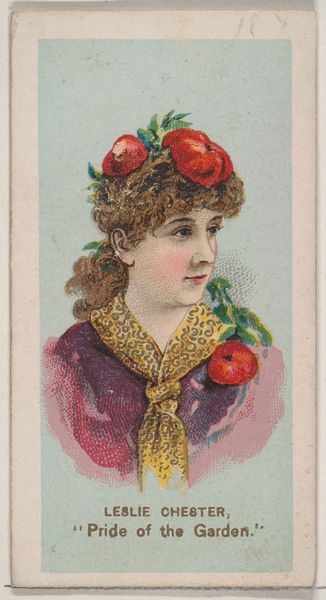
Isabelle Evesson as "The Strawberry," from the series Fancy Dress Ball Costumes (N73) for Duke brand cigarettes 1889
0:00
0:00
drawing, print, watercolor
#
portrait
#
drawing
#
fancy-picture
# print
#
impressionism
#
caricature
#
watercolor
#
portrait drawing
#
watercolour illustration
#
portrait art
Dimensions: Sheet: 2 3/4 x 1 1/2 in. (7 x 3.8 cm)
Copyright: Public Domain
Curator: What a charming, peculiar piece. This is "Isabelle Evesson as 'The Strawberry'," a print dating back to 1889 by W. Duke, Sons & Co. It's part of a series of fancy-dress ball costumes included with Duke brand cigarettes. Editor: My initial reaction is surprise. There’s a sweetness here, but something feels… manufactured. The way the watercolors and drawing combine gives it a slightly unsettling commercial sheen. Curator: Absolutely. Consider the social context: mass-produced cigarette cards acting as a form of advertising. These cards circulated widely, normalizing both tobacco consumption and a certain ideal of femininity. It’s not just about a pretty face; it's about shaping consumer desire and reinforcing gender roles. This particular portrayal taps into that late Victorian fascination with the hyper-feminine in domestic settings. Editor: I'm interested in how the lithographic process was integral to this image’s function as a collectible insert, making it endlessly reproducible and embedded within the commodity itself. Think about the labor involved: the initial drawing, the printmaking, the distribution within packs of cigarettes... it speaks volumes about industrial processes impacting art. It blurs lines, really—is it high art, low art, or just capitalist enterprise? Curator: Precisely, and notice Isabelle herself. Dressed as a strawberry, she embodies a specific vision of femininity and innocence that becomes tied to a brand and the habit it cultivates. The card itself participates in this construction and commodification of her identity as a 'Strawberry.' We should ask what happens to notions of self when the individual, especially a young woman, is turned into an object of consumer desire. Editor: It's fascinating how the material reality of its production – the inks, paper stock, and manufacturing process – intersect with its cultural purpose. What seems frivolous on the surface carries a weight related to labor, consumption, and image circulation. Even today, the afterlives of mass-produced images should concern us. Curator: Looking through a feminist lens, this small card is emblematic of the patriarchal structures influencing beauty ideals, performance, and even our understanding of innocence. There’s an interesting intersection between individual portrayal and societal expectations embedded within a tiny piece of consumer ephemera. Editor: Exactly. Even at first glance, what appears sweet and benign unfolds into an artifact deeply entangled with material production, class structures, and the birth of modern consumer culture. Curator: This was really fascinating—such a deceptively simple image invites multilayered discussions! Editor: Absolutely. It demonstrates how the 'material turn' in art history allows us to engage critically with images often dismissed as merely decorative.
Comments
No comments
Be the first to comment and join the conversation on the ultimate creative platform.
